Your cart is currently empty!
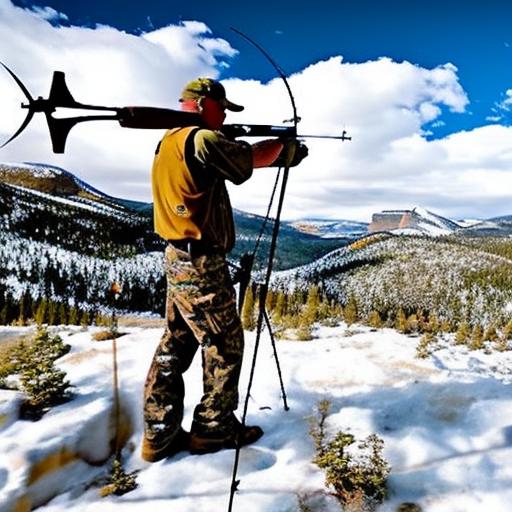
Experience the Thrill of Colorado Archery Elk Hunting: A Guide to the Ultimate Adventure

Colorado archery elk hunting is an exhilarating and challenging outdoor activity that attracts hunters from all over the world. The state’s vast wilderness and diverse landscapes provide the perfect backdrop for this thrilling adventure. Whether you are a seasoned hunter or a beginner, the excitement and adrenaline rush that comes with stalking and taking down an elk with a bow and arrow is unmatched.
Key Takeaways
- Colorado offers thrilling archery elk hunting adventures
- Understanding the basics of archery elk hunting is crucial for success
- Proper gear and equipment preparation is essential for a successful trip
- Finding the best hunting spots in Colorado requires tips and tricks
- Tracking and stalking techniques are key to successful elk hunting in Colorado
Understanding the Basics
Before embarking on your archery elk hunting trip in Colorado, it is important to familiarize yourself with the basics. First and foremost, you will need the right equipment and gear. This includes a high-quality compound bow or recurve bow, arrows, broadheads, camouflage clothing, and other essential accessories. It is also crucial to understand the hunting regulations and obtain the necessary licenses and permits.
Elk behavior and habitat knowledge is also essential for a successful hunt. Elk are social animals that live in herds and have specific patterns and habits. They are most active during dawn and dusk, so it is important to plan your hunting trips accordingly. Understanding their preferred habitats, such as meadows, forests, and water sources, will increase your chances of encountering them.
Preparing for Your Trip
Preparing for an archery elk hunting trip requires careful planning and organization. Creating a checklist of essential gear and equipment is crucial to ensure you have everything you need for a successful hunt. This includes items such as binoculars, range finders, calls, scent control products, field dressing tools, and a backpack to carry all your gear.
Physical fitness and conditioning are also important aspects of preparation. Elk hunting can be physically demanding, requiring long hikes through rugged terrain. Building endurance and strength through regular exercise will help you navigate the wilderness with ease. Additionally, packing and logistics should be carefully considered to ensure a smooth trip. This includes arranging transportation, accommodations, and meals.
Finding the Best Hunting Spots
| Location | Game | Success Rate | Accessibility | Scenery |
|---|---|---|---|---|
| Rocky Mountains | Elk | 70% | Difficult | Breathtaking |
| Midwest Farmland | Deer | 80% | Easy | Flat |
| Alaskan Wilderness | Moose | 60% | Difficult | Stunning |
| Texas Hill Country | Wild Boar | 90% | Easy | Rugged |
Researching and scouting potential hunting locations is a crucial step in preparing for your archery elk hunting trip. Colorado offers a wide range of public lands, national forests, and private ranches where elk can be found. Utilizing online resources, maps, and local knowledge can help you identify the best spots to target.
When scouting for elk, it is important to look for signs such as tracks, droppings, rubs, and wallows. These indicators can help you determine the presence and activity of elk in the area. Additionally, understanding their feeding and bedding patterns will increase your chances of encountering them during your hunt.
Deciding between public and private land hunting is another important consideration. Public lands offer vast opportunities for hunting but may be more crowded. Private land hunting can provide exclusive access to prime elk habitats but often comes with a higher price tag.
Tracking and Stalking Elk
Tracking and stalking elk is an art that requires patience, skill, and knowledge of their behavior. Approaching elk silently and undetected is crucial for a successful hunt. Techniques such as using the wind to your advantage, moving slowly and quietly, and utilizing natural cover can help you get close to your target.
Reading elk behavior and body language is also important during the stalking process. Understanding their vocalizations, postures, and movements can give you valuable insights into their mood and intentions. This knowledge can help you make informed decisions about when to make your move.
Shot placement is another critical aspect of ethical hunting practices. A well-placed shot ensures a quick and humane kill. Understanding the anatomy of an elk and practicing shot placement on targets will increase your chances of a successful harvest.
Safety Precautions

Safety should always be a top priority when participating in any outdoor activity, especially in the wilderness. It is important to be aware of potential hazards such as steep terrain, wildlife encounters, adverse weather conditions, and navigation challenges. Carrying essential safety gear such as a first aid kit, navigation tools, and emergency communication devices is crucial.
To avoid accidents and injuries, it is important to follow basic safety guidelines. This includes informing someone of your hunting plans and expected return time, wearing appropriate clothing and footwear, staying hydrated and well-rested, and being mindful of your surroundings at all times.
Emergency preparedness is also essential. Knowing how to handle emergency situations such as injuries, getting lost, or encountering dangerous wildlife can make a significant difference in the outcome. Familiarize yourself with basic survival skills and carry necessary supplies such as food, water, and shelter.
Hunting Ethics
Respecting the wildlife and environment should be at the forefront of every hunter’s mind. It is important to follow ethical hunting practices to ensure the sustainability of elk populations and preserve the natural beauty of the wilderness.
Adhering to Leave No Trace principles is crucial for minimizing your impact on the environment. This includes packing out all trash, avoiding unnecessary disturbance to wildlife and their habitats, and respecting other hunters and outdoor enthusiasts.
Ethical shot placement is also important for a quick and humane kill. Taking responsible shots within your effective range and ensuring a clean kill is essential for ethical hunting practices. It is important to practice shooting from various distances and angles to improve your accuracy.
Hunting with a Guide vs. Solo Hunting
Deciding whether to hunt with a guide or go solo is a personal choice that depends on various factors. Hunting with a guide can provide valuable expertise, local knowledge, and access to prime hunting locations. Guides can also assist with logistics, field dressing, and packing out the harvested animal. However, hiring a guide can be expensive and may limit your freedom and independence.
Solo hunting allows for complete control over your hunting experience but requires extensive research, scouting, and preparation. It can be a rewarding experience that tests your skills and self-reliance. However, it is important to have a solid understanding of the area, elk behavior, and safety precautions before embarking on a solo hunting trip.
Tips for a Successful Trip
Planning and preparation are key to a successful archery elk hunting trip. Researching the area, understanding elk behavior, and scouting potential hunting spots will increase your chances of success. It is also important to practice shooting regularly and become familiar with your equipment.
Strategies for finding and stalking elk include utilizing calls, decoys, and scent control products. Learning to read elk signs and patterns will help you anticipate their movements and increase your chances of encountering them.
Mental and emotional preparation is also important. Elk hunting can be physically demanding and mentally challenging. Being mentally prepared for long hours of waiting, unpredictable weather conditions, and potential setbacks will help you stay focused and motivated.
The Thrill of the Hunt
Archery elk hunting in Colorado offers a unique blend of excitement, adventure, and connection with nature. Personal experiences and stories from successful hunts are often filled with adrenaline-pumping moments, close encounters with wildlife, and the satisfaction of a well-executed shot.
The beauty and wonder of the Colorado wilderness add to the thrill of the hunt. From majestic mountain ranges to dense forests and serene meadows, the landscapes provide a breathtaking backdrop for your hunting adventures. The opportunity to witness wildlife in their natural habitat is an experience that will stay with you for a lifetime.
Archery elk hunting in Colorado is an exciting and challenging outdoor activity that offers hunters a unique opportunity to connect with nature and test their skills. Understanding the basics, preparing adequately, and practicing ethical hunting practices are crucial for a successful and enjoyable trip. Whether you choose to hunt with a guide or go solo, the thrill of stalking an elk in the beautiful Colorado wilderness is an experience that every hunter should try at least once in their lifetime. So, pack your gear, lace up your boots, and get ready for the adventure of a lifetime.
If you’re an avid hunter looking for your next adventure, you might be interested in reading about Colorado archery elk hunting. But why stop there? Old Oak Syndicate has a wide range of articles on various hunting topics, including tips for pheasant hunting, the best time to turkey hunt, and even how to hunt rabbits without a gun. Check out their article on how to hunt jackrabbits for some valuable insights and techniques. Happy hunting!
FAQs
What is Colorado archery elk hunting?
Colorado archery elk hunting is a type of hunting where hunters use a bow and arrow to hunt elk in the state of Colorado.
When is the archery elk hunting season in Colorado?
The archery elk hunting season in Colorado typically runs from late August to late September.
What are the requirements to hunt elk in Colorado?
To hunt elk in Colorado, hunters must have a valid hunting license and a big game tag specific to the type of elk they wish to hunt. Hunters must also follow all state hunting regulations and laws.
What equipment is needed for Colorado archery elk hunting?
Hunters will need a bow and arrows, camouflage clothing, a hunting knife, binoculars, and a backpack to carry their gear and any harvested elk meat.
Where can I hunt elk in Colorado?
Elk can be hunted in many areas of Colorado, including national forests, state parks, and private land with permission from the landowner. Hunters should research and obtain the necessary permits and licenses before hunting in any specific area.
What is the success rate for Colorado archery elk hunting?
The success rate for Colorado archery elk hunting varies depending on the hunter’s skill level, the area hunted, and other factors. On average, the success rate for archery elk hunting in Colorado is around 10-15%.

Herb has been a longtime lover of the outdoors. Whether it be hunting, camping, fishing or just getting outside to reset. Proud father and animal lover. Bourbon anyone?

by
Tags:
Comments

Categories
- Big Game Hunting (301)
- Deer (202)
- Reviews (3)
- Shooting (16)
- Slingshot (1)
- Small Game Hunting (42)
- Upland Hunting (126)
- Waterfowl Hunting (3)

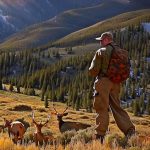
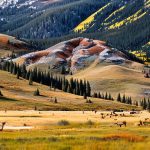
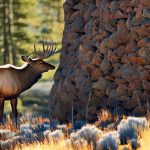
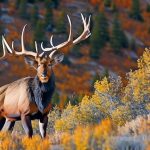
Leave a Reply